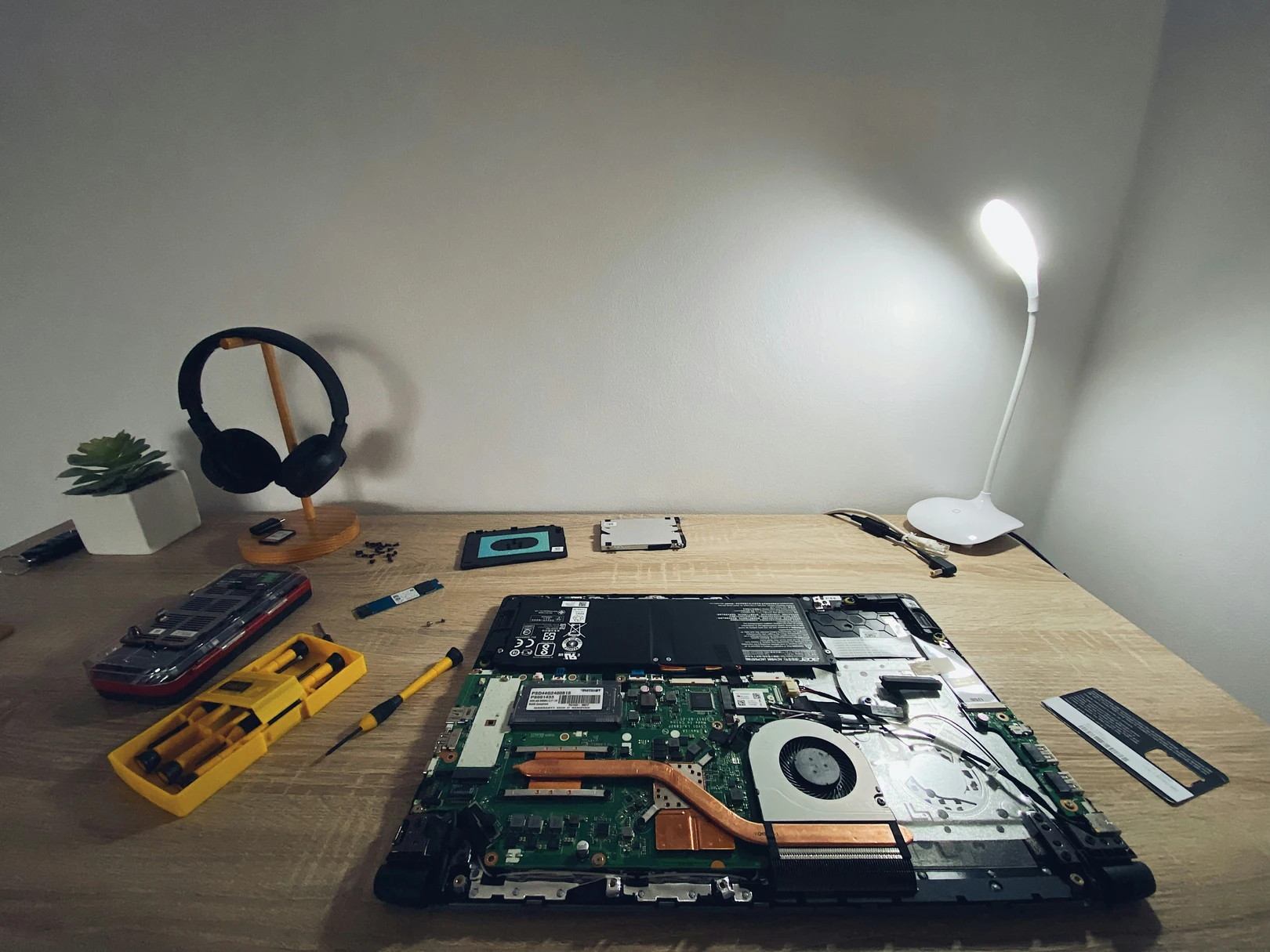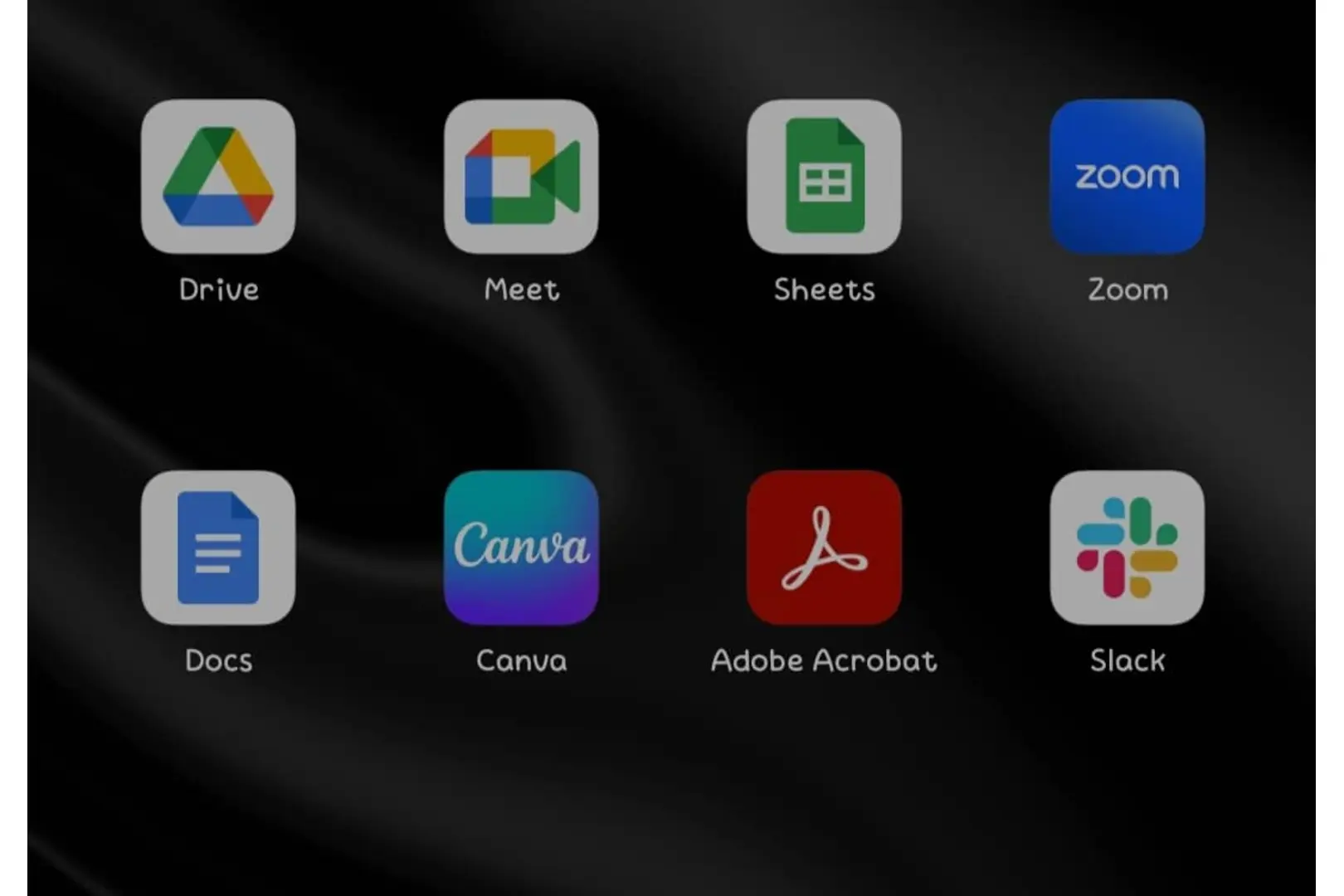Our laptops play a central role in our daily lives. From work to entertainment, having a laptop that performs optimally is essential.
If you find your laptop struggling with multitasking, slow boot times, or diminished battery life, it might be time for an upgrade.
Ensuring optimal performance from your laptop is essential, especially if you’re engaged in tasks that demand a high level of computing power. Whether you’re a tech freelancer, a graphics designer, a blogging business owner, or in the field of mobile app development, you understand the significance of having a laptop that operates at its peak.
The truth is the need for seamless multitasking, rapid boot times, and overall enhanced performance is non-negotiable.
If you find yourself relying heavily on your laptop for resource-intensive applications or juggling multiple projects simultaneously, the efficiency of your device can significantly impact your productivity and creativity.

However, the good news is that you can unlock the full potential of your laptop by strategically upgrading its key components—RAM, SSD, and battery. This trifecta of upgrades can breathe new life into your device, elevating its capabilities and ensuring it meets the demands of your professional endeavors.
So, how can you upgrade your laptop? Let’s find out!
How to Upgrade Your RAM
Random Access Memory (RAM) is the powerhouse behind your laptop’s ability to handle multiple tasks simultaneously. Think of it as short-term memory that your laptop uses to store active applications and data. The more RAM your laptop has, the smoother your multitasking experience.
Upgrading your laptop’s RAM can be a game-changer, allowing you to seamlessly navigate through resource-heavy applications and effortlessly switch between tasks.
Consider the scenario – you’re simultaneously running video editing software, a virtual machine for testing, and a slew of browser tabs for research. In such instances, a RAM upgrade ensures that your laptop has ample space to store and quickly access the data needed for each task, preventing slowdowns and enhancing your workflow.
Discovering the right RAM upgrade involves understanding your laptop’s current RAM capacity, identifying the compatible type, and choosing a size that aligns with your professional demands. With a well-thought-out RAM upgrade, you’ll experience the transformative power of smooth multitasking.

To determine your laptop’s current RAM capacity and type, check the system specifications in the user manual or visit the manufacturer’s website. Common RAM types include DDR3, DDR4, and DDR5, each with different pin configurations.
Checking RAM Compatibility
Before purchasing a new RAM module, ensure compatibility with your laptop’s existing RAM. Mixing incompatible RAM types can lead to system instability. Online tools like Crucial’s System Scanner can help identify your laptop’s RAM type and suggest compatible upgrades.
How to Install a New RAM: Installation Steps
- Prepare Your Workspace: Shut down your laptop, disconnect all external devices, and remove the battery if possible.
- Locate and Open the RAM Compartment: Refer to your laptop’s manual to find the RAM compartment. It’s typically located on the underside of the laptop and secured by screws.
- Remove Existing RAM Modules: Gently push aside the retaining clips on either side of the module until it pops up at an angle. Slide the module out and repeat if upgrading multiple modules.
- Install New RAM Modules: Align the notches on the new module with those on the slot and gently press down until the clips click into place.
- Power Up and Check BIOS: Power on your laptop and enter the BIOS settings to ensure the new RAM is recognized. Update the BIOS if required for optimal compatibility.
Laptop BIOS Configuration
Updating the laptop’s BIOS (Basic Input/Output System) is crucial after a RAM upgrade. Manufacturers often release BIOS updates to enhance system stability and compatibility with new hardware.
- Visit the Manufacturer’s Website: Download the latest BIOS update from the official website using your laptop’s model number.
- Create a Bootable USB Drive: Follow the manufacturer’s instructions to create a bootable USB drive with the BIOS update.
- Enter BIOS Settings: Restart your laptop and enter the BIOS settings by pressing the designated key (usually F2 or Del).
- Update BIOS: Follow on-screen instructions to update the BIOS. Be patient and avoid interrupting the process.
How to Upgrade Your Laptop’s SSD
Solid State Drives (SSDs) are the superheroes of storage, replacing traditional Hard Disk Drives (HDDs) with faster data access speeds, quicker boot times, and improved overall responsiveness.
If your laptop’s storage drive is still clinging to the traditional Hard Disk Drive (HDD), it’s time to usher in a new era of speed and efficiency with a Solid State Drive (SSD) upgrade. SSDs, with their lightning-fast data access speeds and quicker boot times, are a game-changing addition to any laptop.

As a freelancer working on high-resolution projects or a mobile app developer dealing with extensive codebases, the speed of your storage drive directly impacts your workflow. An SSD upgrade not only accelerates file transfers but also enhances the overall responsiveness of your laptop.
Choosing the right SSD involves considering factors like capacity, form factor, and performance. Whether you opt for the more budget-friendly SATA SSD or the speed demons known as NVMe SSDs, the upgrade guarantees a noticeable boost in your laptop’s speed and efficiency.
Choosing the Right SSD
When selecting an SSD, consider factors such as capacity, form factor, and performance. SATA SSDs are more affordable and widely compatible, while NVMe SSDs offer faster data transfer speeds but may require a compatible slot.
- Assess Your Storage Needs: Determine the storage capacity you require. SSDs are available in various sizes, from 120GB to multiple terabytes.
- Check Form Factor Compatibility: Ensure the SSD’s form factor matches your laptop’s specifications. Common form factors include 2.5-inch and M.2.
- SATA vs. NVMe: If your laptop supports NVMe, consider it for faster read and write speeds. Otherwise, SATA SSDs are a solid, budget-friendly choice.
How to Transfer Storage Data to SSD: Data Migration
Transferring data from your existing storage drive to the new SSD is a crucial step in the upgrade process. This ensures a seamless transition and minimizes downtime.
- Backup Important Data: Before starting the migration process, back up essential files to an external drive or cloud storage.
- Use Data Migration Software: Many SSD manufacturers provide data migration tools to simplify the process. Follow the instructions provided with the SSD.
- Clone Your Drive: Connect the new SSD to your laptop using a USB-to-SATA adapter or an external enclosure. Use the migration software to clone your existing drive to the SSD.
SSD Installation Process
Once you’ve migrated your data, it’s time to physically install the new SSD into your laptop.
- Power Down and Disconnect: Shut down your laptop and disconnect all external devices.
- Locate and Open the Storage Compartment: Refer to your laptop’s manual to find the storage compartment, usually located on the bottom.
- Replace the Existing Drive: If you’re replacing a 2.5-inch SATA drive, simply remove it and replace it with the new SSD. If you’re installing an M.2 SSD, find the corresponding slot and secure it in place.
- Secure the Compartment: Close the compartment and secure it with the screws you removed earlier.
- Power Up: Power on your laptop and check the system to ensure the SSD is recognized.
How to Upgrade Laptop’s Battery
Over time, laptop batteries degrade, leading to reduced battery life and increased charging times. If you notice your laptop struggling to hold a charge or unexpectedly shutting down, it might be time for a new battery.
For those constantly on the move or working from diverse locations, the health of your laptop’s battery is paramount. A failing battery can lead to unexpected shutdowns, hindering your ability to work seamlessly on-the-go.
A battery replacement breathes new life into your laptop’s mobility. As an eCommerce business owner meeting clients, a web designer seeking inspiration, or a blogger creating content on the move, a reliable battery ensures uninterrupted productivity.
When considering a battery replacement, focus on selecting a compatible and high-quality battery with sufficient capacity to meet your daily demands. Following proper installation and calibration procedures ensures that your laptop’s newfound mobility aligns with your professional lifestyle.
Choosing the Right Laptop Battery
Selecting a compatible replacement battery is crucial for optimal performance and safety.
- Check Your Laptop’s Model: Ensure you have the correct model number for your laptop. This information is usually found on the bottom of the laptop or in the user manual.
- Voltage and Capacity: Match the voltage and capacity specifications of the existing battery. Select a battery with equal or higher capacity for extended usage.
- Brand Reputation: Choose batteries from reputable manufacturers to ensure quality and safety.
Battery Pre-Installation Checks
Before replacing the battery, take a few precautionary steps to ensure a smooth process.
- Backup Important Data: As a precaution, back up important files in case the laptop shuts down during the replacement.
- Anti-Static Measures: To prevent static electricity damage, work on a non-static surface and use an anti-static wrist strap.
- Fully Discharge the Old Battery: Run your laptop on battery power until it fully discharges to extend the new battery’s life.
Laptop Battery Installation Process
- Power Down and Disconnect: Shut down your laptop, disconnect all external devices, and remove the power adapter.
- Remove the Old Battery: Follow the laptop’s manual to locate and remove the old battery. This may involve removing screws or releasing latches.
- Insert the New Battery: Align the new battery with the connectors in the battery compartment. Gently press down until the battery locks into place.
- Secure the Compartment: Close the battery compartment and secure it with the appropriate screws.
- Power Up: Power on your laptop and ensure the new battery is recognized. Calibrate the battery as recommended by the manufacturer.
PC’s Battery Calibration
Calibrating the new battery ensures accurate reporting of its capacity and prolongs its lifespan.
- Charge to Full Capacity: Charge the battery to its full capacity without interruption.
- Discharge Completely: Use your laptop on battery power until it automatically shuts down due to low battery.
- Recharge Fully: Plug in your laptop and charge it to full capacity without interruption.
What Size RAM is Good For a Laptop?
The optimal size of RAM for a laptop depends on your specific needs and the type of tasks you regularly perform.
Here’s a breakdown based on different user profile:
- Casual Users (4GB to 8GB): For users who mainly browse the internet, use office applications, and engage in light multitasking, 4GB to 8GB of RAM is generally sufficient. This level of RAM is cost-effective and meets the requirements of everyday computing.
- Multitaskers and Content Consumers (8GB to 16GB): If you frequently run multiple applications simultaneously, work with moderate-sized files, or engage in light content creation, consider upgrading to 8GB or 16GB of RAM. This range is suitable for smoother multitasking and better performance in content consumption.
- Content Creators and Gamers (16GB and above): Users involved in video editing, 3D rendering, graphic design, or gaming should opt for 16GB or more of RAM. These tasks demand a higher level of memory to ensure smooth and efficient performance. Gaming laptops, in particular, benefit from higher RAM sizes, especially in resource-intensive games.
- Professional Workstations (32GB and above): For professionals dealing with highly demanding applications like virtualization, complex simulations, or large-scale data analysis, 32GB or more of RAM is recommended. This ensures that the system has enough memory to handle intensive workloads without slowing down.
Keep in mind that the requirements for RAM can change over time as software and applications become more resource-intensive.
Additionally, your laptop’s ability to upgrade RAM may be limited by its design and specifications, so it’s essential to check your laptop’s manual or manufacturer’s website for compatibility before making a purchase.
Now You Know
As you contemplate these upgrades, remember that the benefits extend beyond immediate gratification.
They breathe new life into your laptop, allowing it to keep pace with the demands of modern computing. The empowerment derived from these upgrades transforms your laptop into a reliable, high-performance companion.




















